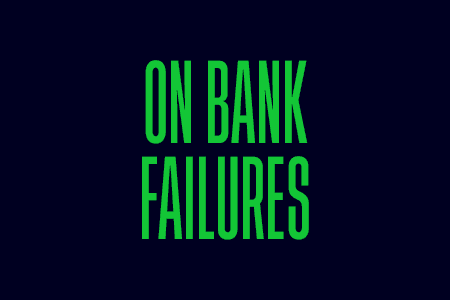News of bank failures has rattled markets and stoked fears about financial instability.
Last week, Silicon Valley Bank was seized by the FDIC, making it the second largest bank to go under in history. Signature Bank, a $100 billion dollar firm, was closed down on Sunday. But in response, the Fed announced a full deposit guarantee for SVB and Signature customers, as well as a $25 billion facility for banks to tap for funding issues.
There are a lot of questions around what comes next, and rightfully so. Banking woes are old wounds for many investors, and scary headlines like these can break these wounds open.
Let’s examine the facts here.
A bank failure isn’t unusual, just a byproduct of a changing economy. Since 2009, over 500 banks have failed, mainly because of bad loans or funding issues. SVB and Signature’s issues fall into the funding issues category. That’s more a sign of changing rates and consumer behavior than a condemnation of the economy.
Generally, the banking sector’s numbers look strong. Bank profitability is healthy, and the industry is historically durable. Industry-wide loan-to-deposit ratios, which gauge a bank’s ability to cover withdrawals and loan losses, are near the lowest since at least the 1980s. Credit risk, or the chance that borrowers can’t repay their debts, isn’t flaring up.
Deposit withdrawals have hurt smaller banks. Many firms are insulated against what did SVB in: i.e. a concentrated customer base rattled by the high-rate environment. One trend working against the banking sector, though, has been the industry-wide drop in deposits. Banks operate by taking deposits from customers and lending them back out at a higher rate. When those deposits leave, firms have to make up for lost money.
Smaller banks may be more exposed to this drop in deposits. And like SVB, banks have generally increased the amount of held-to-maturity holdings in their portfolios, a label that doesn’t require them to realize losses they’ve incurred on their investments. At the end of 2022, held-to-maturity securities made up 60% of banks’ portfolios, much higher than the 39% at the end of 2020. This may be why the Fed chose to offer a facility instead of treating Silicon Valley Bank and Signature as special cases.
The unintended consequences. The banking system touches many areas of our lives, from our own money to the money of the companies that employ us and the economic stability of those companies. That’s why it can feel so unsettling when the system shows some cracks. Unfortunately, nobody knows how this will unfold.
For now, the more prominent concern may be the unintended consequences that are unfolding in rate-sensitive sectors. If you’re an investor heavily involved in tech, financials, or real estate, your focus on quality is more important than ever. Know how your companies make their money and what their balance sheet risks are. And if you’re getting worried, don’t be afraid to hedge.
*Data sourced through Bloomberg. Can be made available upon request.



